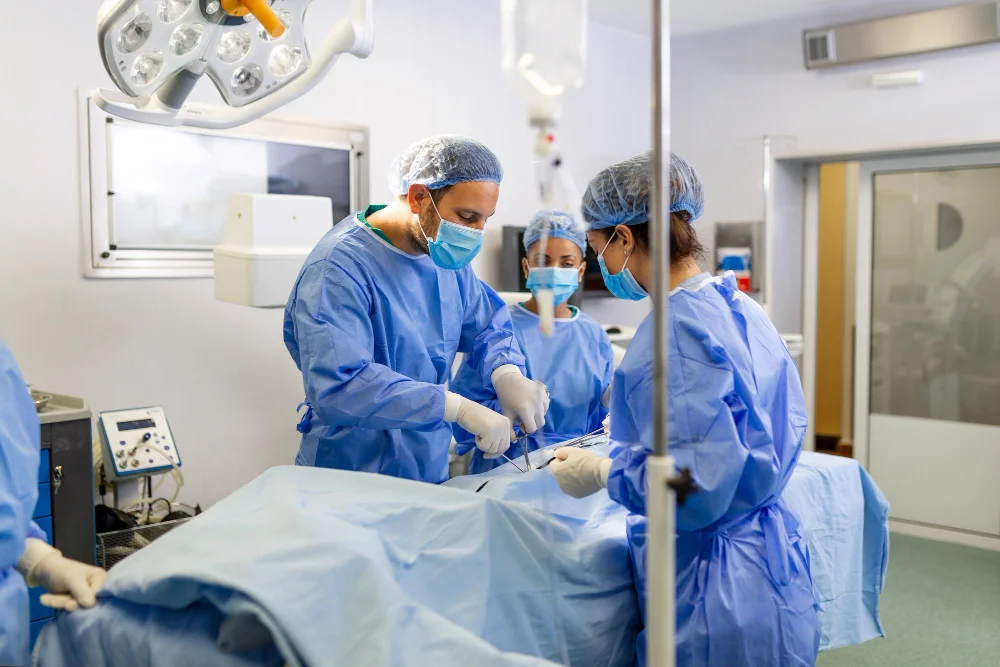Are you considering weight-loss surgery in Plano, Texas, to achieve your health and fitness goals? It’s a deeply personal choice that requires careful consideration. But with so many different weight loss surgeries available, it’s easy to feel lost and overwhelmed.
Whether you’re aiming for weight loss, improved health markers, or enhanced quality of life, this blog will help you navigate the weight loss surgery options in Plano, Texas.
Types of Weight Loss Surgery
There are several types of weight loss surgery or bariatric surgery, each with its own unique benefits in aiding weight loss:
1. Gastric Bypass
Gastric bypass, also known as Roux-en-Y gastric bypass, is a surgical procedure that is considered a powerful tool for individuals with severe obesity (typically a Body Mass Index or BMI exceeding 40) or those with obesity-related health problems like type 2 diabetes or sleep apnea.
During surgery, the stomach is divided into a small upper pouch about the size of an egg. This becomes the new stomach. The larger remaining portion of the stomach is bypassed and no longer involved in food digestion. About 30% of the small intestine is then rerouted to connect directly to the new, smaller stomach pouch. Food now bypasses the bypassed section of the stomach and the first part of the small intestine. This reduces the amount of food you can consume before feeling full and limits the absorption of nutrients by your body.
Gastric bypass surgery offers numerous benefits, including significant and sustainable weight loss, improvements or resolution of obesity-related health conditions, and an enhanced quality of life marked by increased energy levels and self-confidence. However, it also carries risks, such as infection, bleeding, and blood clots, as well as potential nutritional deficiencies due to reduced absorption of vitamins and minerals.
2. Sleeve Gastrectomy
Sleeve gastrectomy, also known as vertical sleeve gastrectomy (VSG), is another weight loss surgery popular in Plano and all over the US. Unlike bypass, which reroutes the digestive system, sleeve gastrectomy focuses on restricting the amount of food your stomach can hold.
About 75% of the stomach is removed for a banana-shaped sleeve. This significantly reduces the stomach’s capacity, leading to individuals feeling full sooner than normal after eating a smaller amount. Additionally, with the new sleeve, the part of the stomach that produces a hormone stimulating hunger is also removed.
Sleeve gastrectomy has significant benefits such as rapid and sustainable weight loss, improvement or resolution of obesity-related health conditions, and a relatively low risk profile compared to more complex procedures. Like any surgical procedure, sleeve gastrectomy carries risks including infection, bleeding, complications related to anesthesia, and long-term complications such as gastric leakage, strictures, and gastroesophageal reflux disease (GERD).
3. Biliopancreatic Diversion with Duodenal Switch (BPD/DS)
Biliopancreatic diversion with duodenal switch (BPD/DS), also known as the duodenal switch, is a complex weight loss surgery considered the most effective for individuals with severe obesity (BMI exceeding 50) or those who haven’t achieved desired results with other procedures.
The surgery involves two steps: first, a large portion of the stomach is removed to create a restrictive sleeve pouch, similar to a sleeve gastrectomy. Second, the small intestine is rerouted, bypassing around 75% of its route, including the section where digestive juices enter. This reduces contact between food and these juices and shortens the intestine available for nutrient absorption.
This dual approach leads to significant calorie restriction and weight loss, but BPD/DS is a major surgery with a longer recovery and a higher risk of complications.
4. Adjustable Gastric Banding
If you are looking for minimally invasive weight loss surgery in Plano, Texas, consider adjustable gastric banding. Also known as laparoscopic gastric banding or lap-band surgery, it takes a unique approach to weight loss compared to other procedures. Unlike modifying the stomach itself, it utilizes an adjustable band to restrict food intake through a minimally invasive procedure.
During this type of weight loss surgery, a soft, inflatable silicone band is placed around the upper portion of your stomach. This creates a small pouch above the band and limits the amount of food that can enter your lower stomach. The band is connected to a port placed under your skin. Through this port, your doctor can inject saline solution or inflate the band, further restricting the passage of food. Conversely, saline can be removed to loosen the band if needed.
This adjustable feature allows for personalized control over food intake. However, adjustable gastric banding requires ongoing follow-up appointments for adjustments and may not be as effective for morbid and severely obese individuals compared to other procedures.
What approach best suits your needs?
Unfortunately, there’s no single “one-size-fits-all” answer to “What approach best suits your needs?” when it comes to weight loss surgery solutions in Plano. Each procedure offers benefits and drawbacks, and the ideal choice depends heavily on several factors, including BMI, overall health and lifestyle, preference, and many other factors.
Conclusion
While exploring options for weight loss surgery in Plano, Texas, a personalized consultation with a bariatric surgeon is a must. This discussion allows you to find an approach that fits your goals. Don’t hesitate to discuss concerns about BMI suitability, health impact, lifestyle changes, risks, recovery, and long-term care. A skilled surgeon will guide you through every step, ensuring you feel confident as you embark on a transformative journey towards better health.


